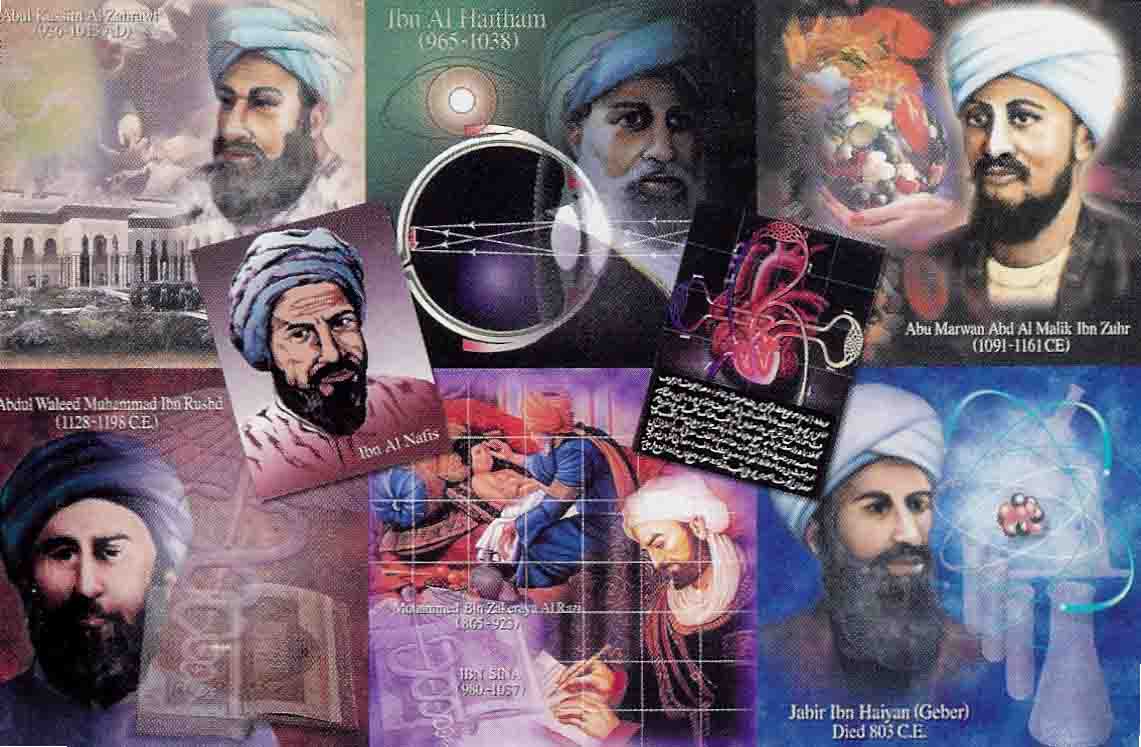ABU AL-NASR AL-FARABI
(870-950 A.D.)
A
bu Nasr Mohammad Ibn al-Farakh al-Farabi was born in a
small village Wasij, near Farab in Turkistan in 259 A.H. (870 A.D.). His parents
were originally of Persian descent, but his ancestors had migrated to Turkistan.
Known as al-Phrarabius in Europe, Farabi was the son of a general. He completed
his earlier education at Farab and Bukhara but, later on, he went to Baghdad for
higher studies, where he studied and worked for a long time viz., from 901 A.D.
to 942 A.D. During this period he acquired mastery over several languages as
well as various branches of knowledge and technology. He lived through the reign
of six Abbasid Caliphs. As a philosopher and scientist, he acquired great
proficiency in various branches of learning and is reported to have been an
expert in different languages.
F
arabi travelled to many distant lands and studied for
some time in Damascus and Egypt, but repeatedly came back to Baghdad, until he
visited Saif al-Daula's court in Halab (Allepo). He became one of the constant
companions of the King, and it was here at Halab that his fame spread far and
wide. During his early years he was a Qadi (Judge), but later on the took
up teaching as his profession. During the course of his career, he had suffered
great hardships and at one time was the caretaker of a garden. He died a
bachelor in Damascus in 339 A.H./950 A.D. at the age of 80 years.
F
arabi contributed considerably to science, philosophy,
logic, sociology, medicine, mathematics and music. His major contributions seem
to be in philosophy, logic and sociology and, of course, stands out as an
Encyclopedist. As a philosopher, he may be classed as a Neoplatonist who tried
to synthesize Platonism and Aristotelism with theology and he wrote such rich
commentaries on Aristotle's physics, meteorology, logic, etc., in addition to a
large number of books on several other subjects embodying his original
contribution, that he came to be known as the 'Second Teacher' (al-Mou'allim
al-Thani) Aristotle being the First. One of the important contribu- tions of
Farabi was to make the study of logic more easy by dividing it into two
categories viz., Takhayyul (idea) and Thubut (proof).
I
n sociology he wrote several books out of which Ara
Ahl al-Madina al-Fadila became famous. His books on psychology and
metaphysics were largely based on his own work. He also wrote a book on music,
captioned Kitab al-Musiqa. He was a great expert in the art and science
of music and invented several musical instru- ments, besides contributing to the
knowledge of musical notes. It has been reported that he could play his
instrument so well as to make people laugh or weep at will. In physics he
demonstrated the existence of void.
A
lthough many of his books have been lost, 117 are known,
out of which 43 are on logic, 11 on metaphysics, 7 on ethics, 7 on political
science, 17 on music, medicine and sociology, while 11 are commentaries. Some of
his more famous books include the book Fusus al-Hikam, which remained a
text book of philosophy for several centuries at various centres of learning and
is still taught at some of the institutions in the East. The book Kitab al-lhsa al 'Ulum discusses classification and
fundamental principles of science in a unique and useful manner. The book
Ara Ahl al-Madina al- Fadila 'The Model City'
is a significant early contribution to socio- logy snd political science.
F
arabi exercised great influence on science and knowledge
for several centuries. Unfortunately, the book Theology
of Aristotle, as was available to him at that time was regarded by
him as genuine, although later on it turned out to be the work of some
Neoplatonic writer. Despite this, he was regarded the Second Teacher in
philosophy for centuries and his work, aimed at synthesis of philosophy and
sufism, paved the way for Ibn Sina's work.















